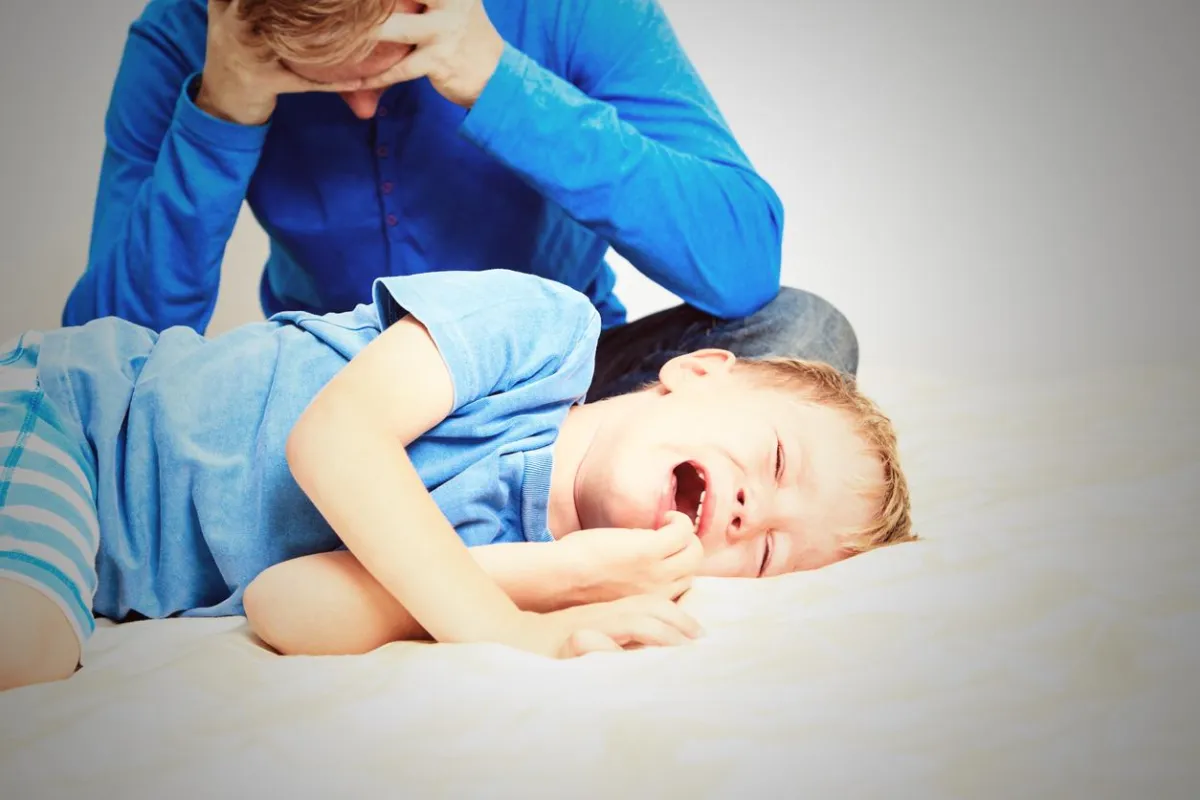
Why Do Tantrums Happen?
When a child enters a tantrum, it can be hard to know what to do or how to handle it. Talking to a child in a tantrum yields no results because a child in a tantrum cannot hear or understand what you are saying. Once a child enters a tantrum, it is like they are in a completely different place or state of mind, so reaching them through words, gestures, or even touch can be impossible and could actually make the tantrum worse.
The best thing to do during a tantrum is to just let it play out, although different experts have different opinions on this. Be nearby to make sure that the child doesn't hurt themselves, because sometimes tantrums can include self-harming behaviors such as banging their head on the floor or another piece of furniture. Sometimes it can feel like the tantrum is going on forever, but it will end at some point. Once the tantrum is over and the child is calmer, it is important that you also stay calm and talk to the child in non-judgmental tones and language. Do not talk about the tantrum itself or judge the child for the tantrum. Keep the conversation focused on what caused the tantrum in the first place, or on what you had asked the child to do before the tantrum happened: "Are you ready to __________ now?"
And give them a hug! They just went through a huge, scary emotion and need to know that we still love them and care about them when it is over. Acting judgmental or punishing them for the tantrum will not help and may actually lead to another tantrum or a different challenging behavior. During other times of the day we can teach them what to do instead of a tantrum, when they are calm, but right after a tantrum happens we need to stay calm, cool, and collected and help the child move on to the next step of their day.
So Why Do Tantrums Happen?
The prime ages for tantrums to happen is between 1.5 and 3 years old. Children within this age range are learning to talk and express themselves and are becoming increasingly independent. They want to do things for themselves and have a sense of control over their lives. When a situation arises in which things have to happen differently than what they want, that can lead to a sense of loss of independence, which can lead to a fight or flight response. In children this age, that response usually looks like a tantrum because they haven't yet acquired the language skills or self-regulation skills to handle this sense of loss in a different way.
Children in this age range are learning how to make choices and how to express their independence. Sometimes they might make a choice and then change their mind in the middle. They are exercising those choice-making muscles but haven't gotten to the point where once they make a choice they can mentally stick with it (think of the scenarios where they choose a color cup or something to eat and then fall into a tantrum when they get what they chose). That makes this a hard age when it comes to giving children choices, but the more they exercise those choice-making muscles, the easier it will be for them to make a choice and stick with it in the future.
Then there is the overwhelm involved with actually making a choice. Children can become overwhelmed just in the process of making a choice, especially if either choice is something that they want. Children this age have not learned how to delay gratification yet, so when presented with a choice between two things that they might want, it can be overwhelming knowing that they aren't going to get one of those things. And if the choice is between several things, the overwhelm is even greater because the amount of things to choose from is greater. Keep this in mind when giving children choices, and offer a smaller amount of choices the younger the child is.
Tantrums really go back to the sense of who has control over their lives - the internal vs external control. Before the child has reached this age range, all of their choices and actions were directed by an adult, which means that their entire life was directed by an external control. Everything from what they wore to what they ate, to what they did on a moment by moment basis. As they become more mobile and more expressive, they begin to have the skills to make their own decisions and do their own things, shifting to internal control. But they are not developmentally ready to have complete control over their lives yet, and that can lead to conflict between what they might want and what is actually best for them.
This is the main sense of conflict that occurs throughout the process of raising a child, from the time that they begin to make their own choices to when they finally leave the nest. As they get older their choices become more complex, and as parents and teachers we try to teach them the best choices to make. Sometimes that means over-riding their choices, which can lead to that conflict between internal and external control within the child. It is also the main source of big emotions and tantrums throughout the life of the child. By providing children with a sense of control while still leading them to meet our expectations, we can help them be successful and head off the tantrums that come during this challenging time of their lives.
